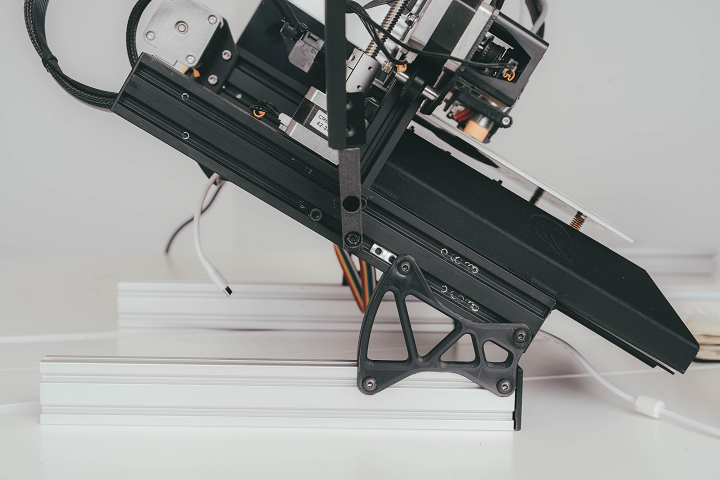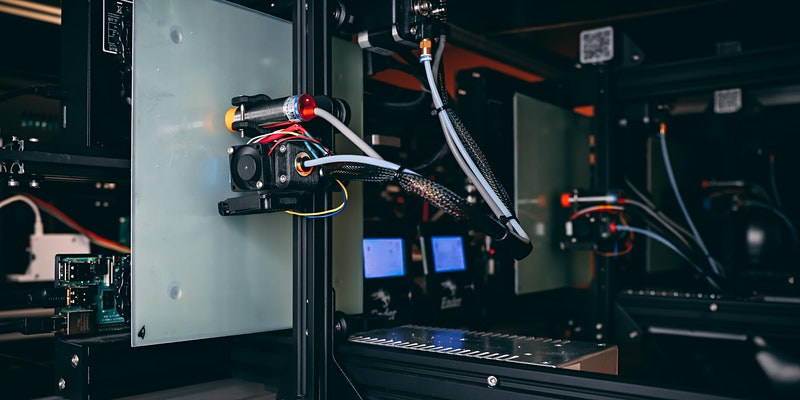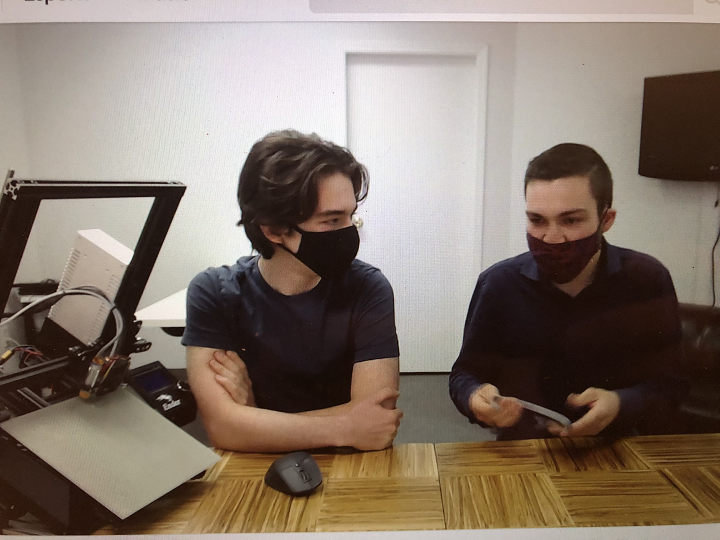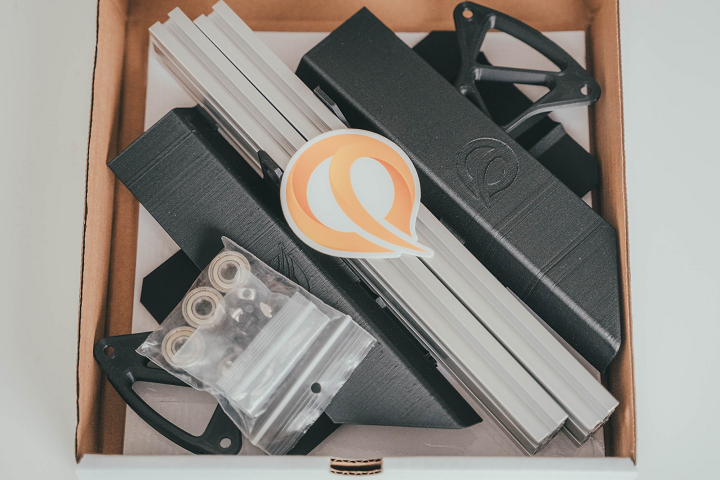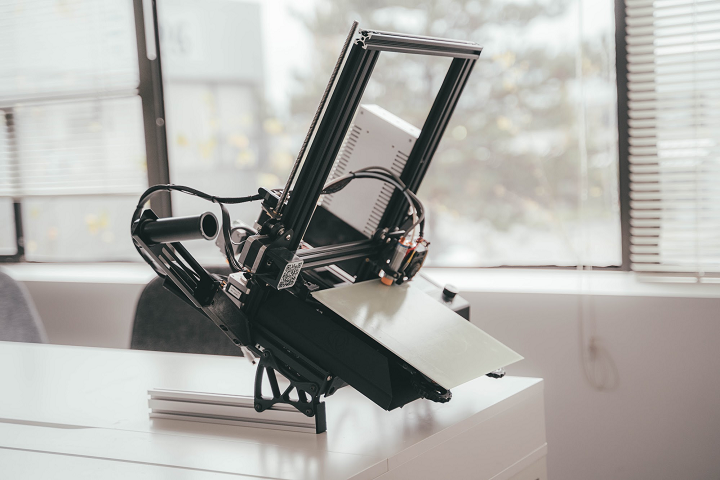Vancouver, British Columbia-based startup 3DQue Systems works to automate FFF and FDM 3D printer networks for the purposes of ensuring mass production. The technology it offers is really cool, providing solutions to common problems in scaling the technology, such as unit cost, autonomous part removal, and automated production. The QPod, its high-volume plastic 3D printing mass production unit, is powered by its QSuite automation software, and features a vertical build platform.
Now, 3DQue is offering its proprietary technology to individual 3D printer operators so they can autonomously print multiple jobs 24/7. This week, the startup will be releasing its 3DQue Looping Kit for Ender 3, an upgrade kit that promises more efficient, convenient printing and includes all the necessary hardware and software for remote printer start, reset, and automated part release.
“At 3DQue, we don’t need to babysit our printers all day and night,” 3DQue’s Co-Founder and CIO Mateo Pekic said in a press release. “We don’t want you to work for your printer, We want your printer to work for you.”
Since May, 3DQue has been pushing its continuous automation technology to the max, printing face shields to help out during the continuing COVID-19 pandemic. But this also served a dual purpose. During the company’s recent Livestream, in which the Looping Kit for Ender 3 was announced, team members explained that this gave them an opportunity to complete a stress test of their remote 3D printing technology.
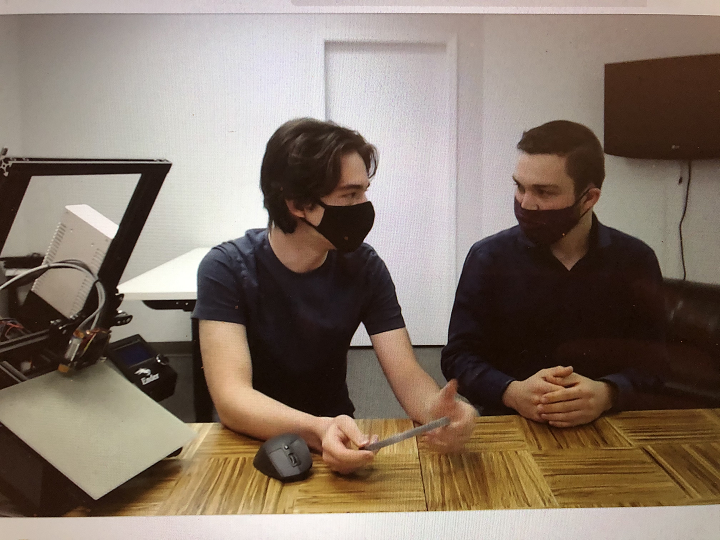
L-R: 3DQue co-founder Mateo Pekic and intern Kevin during livestream webinar. The Ender 3 pictured here is at a 30° angle, which is a more gentle slope than the typical 90° angle
In just five days, over the course of 1,000 hours of print time on only nine printers, 3DQue was able to print a grand total of 897 face shield visors. Of those 1,000 hours, less than three were spent by real human operators checking nozzles and refilling plastic filament. That’s only 0.3% of the total print time, which is way less than the typical amount of time spent (over 100 hours) during mass production jobs uploading files, reapplying adhesive, checking printers, and removing completed parts.
“In 3D printing, the referenced time-frame includes machine hours but usually fails to take into account operator time. Nor the annoyance of being situated next to the machine at the very start and end of the printing process,” 3DQue explained in the release.
Last week, I had the pleasure of joining an interactive 3DQue livestream webinar, fittingly titled “How our Printer Produced 897 Face Shields in just 5 Days without Us,” hosted by Pekic and Kevin, an intern with the company. Using the video gamer and community Twitch platform, the two answered questions, talked about the company in general, and discussed just how 3DQue was able to use the newly available automated print looping technology to complete 1,000 hours of continuous printing in five days, with nine printers running nonstop to make nearly 900 face shield visors. Fun fact, they used a total of 20 rolls of filament for the project!
Pekic explained that with the use of 3DQue’s Looping Kit for Ender 3, which includes a self-releasing print bed and remote access software, anyone can print anything, from anywhere, at anytime.
“The core of our technology is automated part release,” Pekic explained. “The printers clear themselves.”
He began 3D printing small part quantities when he was just a teenager, and was frustrated with having to be tied to a 3D printer network all day every day. That led to his great invention: the software-controlled automated part release system, which frees up 3D printer operators to focus more on design and less on waiting for a free printer, scraping completed parts off the print bed, and putting adhesive back on it.
“This was really a stress test,” Kevin said about 3DQue’s 1,000 hours of printing. “Is it feasible to autonomously print for that long? Is 3D printing really that reliable for mass production? And I’d say it is. You don’t have to babysit your printer.”
Pekic said that the team recently set up a production facility in Vancouver with a total of 36 3D printers with the unusual vertical print beds, and sectioned off nine of them in order to “see what our down time would be if we ran them for 1,000 hours.”
“Part of what’s key to automation, and where 3D printing tends to lack, is inconsistency between prints, because most systems are designed for an operator to be there using it, aligning, calibrating, and staying there to watch it print at the beginning,” Pekic said. “So how do we make sure everything stays consistent?”
3DQue uses inductive probes for automatic bed leveling, which helps with the consistency Pekic mentioned.
“You need to make sure the file you’re going to repeat a bunch of times is a good file, that it’s sliced correctly,” Pekic said. “If you send a ball of spaghetti to the printer, it’s going to print that ball of spaghetti 100 times in a row. So there is a certain amount of tuning needed.”
Good print adhesion is required to keep the vertical printing at a high level of quality and consistency. Pekic said that their process doesn’t use any consumables, like glue or blue tape, which can lower the level of consistency.
“If you want to automate, you can’t be dealing with that,” Pekic said. “Also, the operator can save all this time rather than worrying what mixture of glue to use.”
“The core of this is consistency, and in order to keep that consistency you don’t want any moving parts involved with your print bed, and the material we developed for the bed doesn’t wear the same way others do, like BuildTak.”
Kevin explained that all 36 of the printers at the Vancouver facility are connected to the same server, and acknowledged that most of the time, this kind of microfactory setting would be pretty difficult to achieve at home with your laptop. Pekic went on to say that the company has been customizing its in-house software in order to “carve out some of those features for hobbyist use, like single printer control, stuff that’s more stable, clearing the parts correctly, especially since this is a super initial offering here.”
“We think that hobbyists, and those working in startups or at print farms, could benefit from this,” Kevin said about 3DQue’s automation technology. “It saves you time, saves you money, and a lot of hassle.”
Starting at 2 pm EST, October 20th, a limited number of the new 3DQue Looping Kits for Ender 3 will be available for presale, so all Ender 3 users can enjoy the company’s production capability and efficiency.
“We’re doing basically a limited release, to foster a community of early adopters and really engage them in feedback,” Kevin explained, noting that 3DQue’s live sessions will continue each week until the kits are sent out, hopefully in January. “You could save hundreds of hours just with automated printing for just like $80.”
The presale will last for four weeks, but 3DQue is offering an early bird price on the first thirty kits for just $79, which includes a free six month QSuite software subscription. Once these early bird kits are sold out, the cost is moving to the regular presale price of $97, with three free months of software included. For comparison, the regular price of the kit will be $160, so if you participate in the presale, you’ll be enjoying a savings of 55%.
One of the webinar participants asked if the kits were only available for the Ender 3, and Pekic said that’s the only one being launched now, but that next month 3dQue will begin developing kits for “the next most common printers,” such as Ultimaker and Prusa systems. He and Kevin explained that a lot of the work involved in creating the kits is figuring out the firmware, “understanding how to communicate with those printers.” Another attendee asked how the new 3DQue Looping Kit for Ender 3 compares to other automated solutions, and Pekic stated that it’s better than others.
This Wednesday, October 21st, 3DQue will be holding another livestream webinar at 9 pm EST about the new automation kit. First, attendees and hosts will go over the contents of the kit, and then do a build together, so it will basically be a live assembly tutorial. You can register for the event here.
(Source/Images: 3DQue)
Subscribe to Our Email Newsletter
Stay up-to-date on all the latest news from the 3D printing industry and receive information and offers from third party vendors.
Print Services
Upload your 3D Models and get them printed quickly and efficiently.
You May Also Like
The Dental Additive Manufacturing Market Could Nearly Double by 2033, According to AM Research
According to an AM Research report from 2024, the medical device industry, specifically in dentistry, prosthetics, and audiology, is expected to see significant growth as these segments continue to benefit from...
Heating Up: 3D Systems’ Scott Green Discusses 3D Printing’s Potential in the Data Center Industry
The relentless rise of NVIDIA, the steadily increasing pledges of major private and public investments in national infrastructure projects around the world, and the general cultural obsession with AI have...
AM Research Webinar Explores Continuum’s Sustainable Metal Additive Manufacturing Powders
Metal additive manufacturing (AM) powder supplier Continuum Powders is working to develop solutions that empower industries to reduce waste and optimize their resources. An independent life cycle assessment (LCA) of...
3D Printed Footwear Startup Koobz Lands $7.2M in Seed Round
California-based Koobz is focused on reshoring the U.S. footwear supply chain with advanced manufacturing processes, including 3D printing. The startup just announced that it has added $6 million to its...


